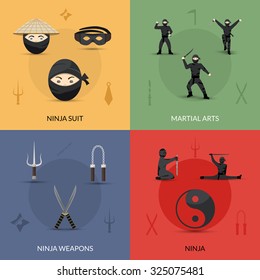Exploring The Rich Heritage And Spiritual Dimensions Of Martial Arts: An Extensive Evaluation
Exploring The Rich Heritage And Spiritual Dimensions Of Martial Arts: An Extensive Evaluation
Blog Article
Post Composed By-Ingram Patterson
Step into the old world where martial arts were born out of necessity in diverse areas. Cultures crafted special combating styles intertwined with historical contexts. Strategies progressed over centuries through dedicated technique and social exchanges. Today, contemporary martial arts mix typical elements for optimal efficiency. Philosophically, martial arts emphasize self-control, self-improvement, and consistency. Regard, humbleness, and balance are fundamental concepts assisting experts in the direction of growth and durability. Discover https://emiliokexod.blog5star.com/30603278/martial-arts-for-children-cultivating-self-confidence-and-character-growth-from-a-young-age of this abundant history and approach to uncover the profound influences shaping this enduring technique.
Beginnings of Fighting Style
Martial arts came from numerous areas around the world, developing as sensible fight systems to resist risks. These ancient battling designs were developed out of need, with each society crafting techniques suited to their distinct settings and difficulties. From the grappling arts of Jujutsu in Japan to the striking techniques of Kung Fu in China, martial arts were deeply intertwined with the historical, social, and cultural material of their respective societies.
In Japan, the samurai course polished martial arts like Kenjutsu, the art of the sword, which later advanced into the a lot more promoted form of Kendo. At the same time, in Brazil, Capoeira became a blend of dancing and combat, developed by enslaved Africans as a way to stand up to oppression. Each martial art lugs with it a rich background and approach, mirroring the values and beliefs of individuals who exercised them.
As you look into the origins of martial arts, you reveal a tapestry of human resourcefulness, durability, and the unyielding spirit of warriors throughout time.
Evolution of Strategies
Via centuries of technique and improvement, combat methods within different martial arts have undertaken a profound development. From old styles like Kung Fu and Martial arts to extra modern-day techniques such as Brazilian Jiu-Jitsu and Krav Maga, the development of strategies has been driven by a combination of cultural impacts, practical applications, and technical developments.
One significant facet of this development is the cross-pollination of techniques in between various martial arts. For instance, techniques from conventional Japanese Jiu-Jitsu were included into the creation of Judo by Jigoro Kano in the late 19th century. This blending of designs has resulted in the growth of hybrid martial arts like Mixed Martial Arts (MIXED MARTIAL ARTS), which integrate aspects of striking, grappling, and entry strategies.
Furthermore, the development of strategies has been shaped by the boosting focus on effectiveness and efficiency in battle. martial arts reigns - chapter 127 have actually continuously sought to fine-tune their techniques via rigorous training, trial and error, and competitors, bring about the advancement of extremely specialized and reliable fighting designs. In general, the advancement of methods in martial arts reflects the vibrant nature of fight and the ongoing quest for improvement and technology.
Thoughtful Structures
Checking out the underlying philosophical concepts of martial arts offers understanding into their core worths and leading beliefs. At the heart of many martial arts techniques is the idea of technique itself. By educating your body and mind to work as one natural system, you cultivate self-control that extends beyond the dojo or health club right into day-to-day life. This self-control incorporates regard, humility, and self-discipline, forming not simply your physical capabilities but additionally your personality.
Another fundamental philosophical structure in martial arts is the idea of continual self-improvement. The journey of grasping a fighting style is never-ending, with experts constantly striving to far better themselves, both literally and mentally. what age can my child learn martial arts on development cultivates resilience, determination, and a growth frame of mind that can be related to all facets of life.
Furthermore, martial arts stress the significance of consistency and balance. Strategies are developed to make use of a challenger's energy versus them, highlighting the concept of yielding and rerouting pressure instead of meeting it head-on. This philosophy encompasses social connections, advertising calm resolutions and mutual understanding. By welcoming these thoughtful foundations, martial artists not only improve their fight abilities but also cultivate a lifestyle centered on individual development, regard, and harmony.
Conclusion
Finally, the history and philosophy of martial arts provide a rich tapestry of custom, technique, and self-improvement.
Consider example the tale of Bruce Lee, who changed martial arts by mixing different styles and philosophies to produce his very own special type of Jeet Kune Do.
Through commitment and technology, martial musicians remain to press borders and influence others to reach their complete capacity both in combat and in life.
